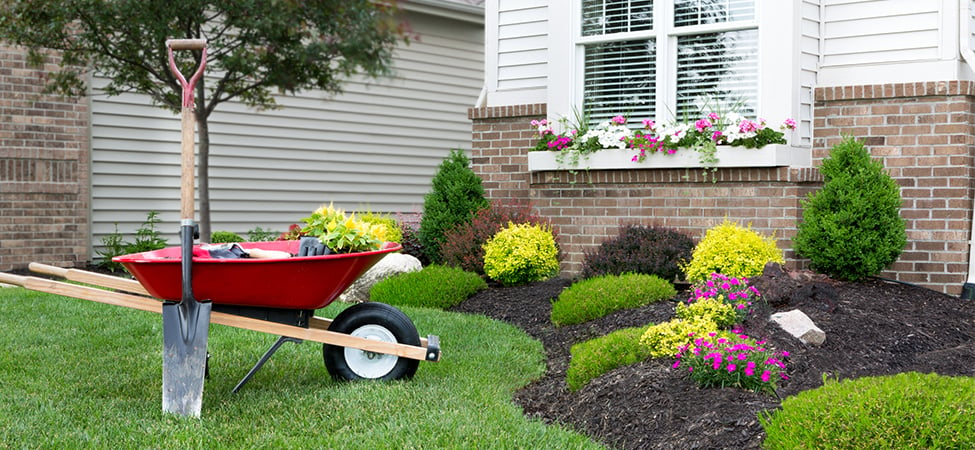Spring has officially sprung! As temperatures climb and plants of all kinds begin to bloom, you might feel pressure to get your outdoor space in order. Check out our tips below for getting your garden in tip-top shape for springtime!
1.Get your tools ready: To get started on your garden, make sure you’ve got the tools you need on hand. A pair of gloves, sharpened shears, a good shovel, and a hand trowel are a few things you’ll want to have around when rejuvenating your outdoor space. Check out this list of 12 essential garden tools for beginners.
2. Dispose of dead plants and weeds: Whether you’ve got a green thumb or you’re new to gardening, you’ll want to begin your garden revival by getting rid of dead plants and pruning your weeds. You’ll find it easiest to do so while the ground is still slightly soft from the winter. And we suggest tackling those weeds first – the longer they stay rooted, the more of a chance they’ll have to go to seed.
3. Prune what remains: If you have ornamental grasses or trees, it’s important to prune dormant sprouts or branches to allow new ones to grow in the springtime. This process will differ depending on what’s in your garden, so be sure to do your research to avoid over-pruning.
4. Fertilize the space: A well-fertilized bed is essential to a flourishing garden. After pruning and tidying up your space, gently plow the area and lay down an all-purpose fertilizer to help you create a great foundation for anything you might plant.
5. Plant what’s in season: Once your garden is ready for planting, create a foundation of warm weather-loving flowers and bulbs that will flourish all season long. Check out this list of 45 great summer flowers that look beautiful and can withstand the heat.
6. Grow your own food: Growing your own crops can be an extremely rewarding experience. You can easily grow fruits and vegetables like cherry tomatoes, lettuce, and berries right in your front or back yard. Check out this list of summer-friendly veggies and easy-to-grow fruits to get you started – and be sure to consider your local climate when choosing what to plant.
7. Add support: Some fruit-bearing, flowering, or vining plants may require extra support in the form of stakes. Check out this article for a list of plants that may need some added support.
8. Consider compost: Some spring and summer-loving perennials – like roses, clematis, bramble berries, and delphinium – benefit from a top layer of compost. When applying, be sure to do so before it rains to help it settle into place, and avoid burying any new sprouts.
9. Add some flair: Accessorize your spruced-up garden by adding decorative elements, like gazing balls, colorful glass stakes, wind chimes, whirligigs, and other décor. For places where temperatures are still too cold to start planting, this can be a great way to signify springtime without planting.
10. Enjoy your space: If you’ve got the space and budget to do so, consider adding a few pieces of outdoor furniture to your outdoor space. Creating a comfortable and welcoming space for yourself will incentivize you and your family to spend more time outside this spring.
With our tips, we hope you can tackle getting your garden ready for spring with confidence. A great outdoor space can help you best enjoy your home – or help you get it ready for listing.
If you have questions about buying or selling your house, contacts us at Mariott Real Estate today.


